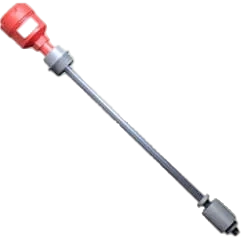Tank Level Alarm Is Now Compulsory in Many States

The monitoring of the liquid level in a tank by a device known as a tank level alarm allows for the tank’s operators or other workers to be notified when the level hits a predetermined threshold. Tank level alarms can operate in a number of different ways, depending on the type of alarm and the kind of liquid that is being monitored; however, in general, they function by employing one or more sensors to measure the level of the liquid contained within the tank, and then sending a signal to an alarm or control system when the level reaches a point that has been predetermined by the user. The specific way in which a tank level alarm works will depend on the type of alarm and the kind of liquid that is being monitored.
The following is an explanation of the operation of some typical types of sensors and technologies that are utilised in tank level alarms:
Submersible A great option for monitoring your chemicals and delivering a high level alarm to prevent any overflow scenarios is level sensors with a local display that have relay outputs. These sensors are a great alternative for monitoring your inventory.
Float sensors are a type of device that utilises a buoyant object that floats on top of the liquid and is connected to a sensor that sends a signal when the float reaches a certain point. A float sensor is a device that uses a buoyant object that floats on top of the liquid. A float sensor is a device that uses a buoyant object that It’s up to you whether the sensor is electrical or mechanical. The float will ascend to a higher position as the liquid level in the tank increases. When the float gets to the point where it’s supposed to be, the sensor will transmit a signal to the system that controls the alarm.
Sensors that make use of ultrasonic waves An ultrasonic sensor measures the distance between itself and the surface of the liquid by employing sound waves to do so. The sensor will first emit a sound wave, and then it will measure the amount of time it takes for the wave to return. After that, the sensor performs a calculation based on the distance to the surface in order to determine the level of the liquid.
Conductivity sensors: A conductivity sensor is a sensor that measures the level of liquid based on the electrical conductivity of the liquid. The level of the liquid can be determined by the sensor by first sending an electrical current through the liquid and then measuring the resistance to the current. This technique has a high degree of accuracy and can be utilised with a diverse assortment of liquids.
Radar sensors: A radar sensor is a device that measures the distance between itself and the surface of a liquid by employing radar waves to detect the distance. After that, the sensor works backwards to determine the height of the liquid depending on the distance. This technique has a high degree of accuracy and can be utilised with a diverse assortment of liquids.
The alarm or control system will take the required action once it receives a signal from the sensor showing that the level of the liquid has reached a predetermined threshold. This may involve triggering other safety systems such as emergency shutdown valves, raising an alarm, or stopping the flow of liquid into the tank. It may also involve stopping the flow of liquid into the tank.
It is essential to keep in mind that tank level alarms need to be checked and serviced on a routine basis in order to guarantee that they are functioning appropriately and to stop any problems from occurring. In addition to this, it is essential for workers to receive training on the correct operation of the alarm system as well as its maintenance.
An operator or other member of staff will be notified by a tank level alarm when the liquid level in the tank reaches a predetermined threshold. This type of device is used to monitor the level of the liquid contained within a tank. Tank level alarms make use of one or more sensors in order to monitor the level of the liquid that is contained within the tank. These sensors can be float, ultrasonic, conductivity, or radar sensors. The alarm or control system will take the required action once it receives a signal from the sensor showing that the level of the liquid has reached a predetermined threshold. It is essential to do routine checks, maintenance, and inspections of the alarm system, as well as staff training, in order to ensure that it performs properly and to avoid any malfunctions.
Learn more about tank level sensors
Learn more about tank level alarms
Please contact us to discuss your application


